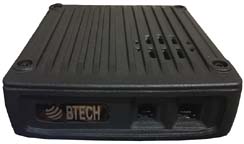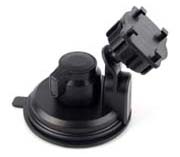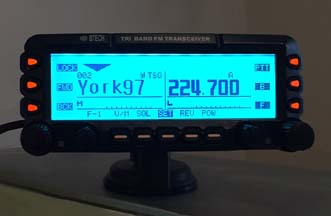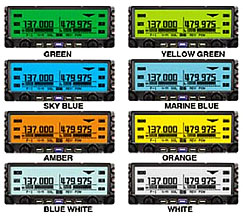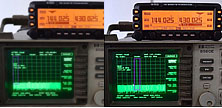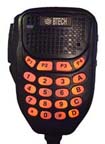Ham Radio - Camera -
Computer - F8HP - UV5R - Baofeng - Pofung
Product Review
 UV-50X3
UV-50X3
Tri-Band Mobile Transceiver
w/Cross Band Repeat
136-174MHz / 222-225MHz / 400-480MHz
plus Air Band Receive
by: John 'Miklor'
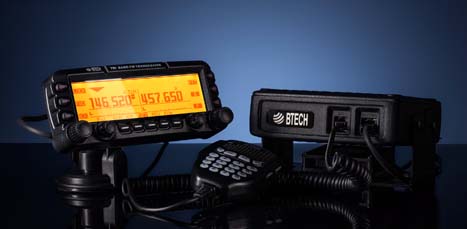

50W Tri-Band Mobile
Product Review
Tri-Band Mobile Transceiver
w/Cross Band Repeat
136-174MHz / 222-225MHz / 400-480MHz
plus Air Band Receive
by: John 'Miklor'

50W Tri-Band Mobile
|
Miklor
First off, I am not a dealer, manufacturer or distributor, so I have nothing to gain by inflating or deflating the performance of a radio. That being said... I had a chance to work with the 50X3 and have given it thorough trial, and put it through it's paces. I don't do "unboxing" videos on YouTube, so let's get started. General Description Four years after its initial design, the VGC 6600PRO has evolved into the BTech UV-50X3, a full featured Tri-Band mobile that delivers a full 50W on VHF and UHF, with addition of a 220 MHz module that delivers 5W output. The 220 MHz module was specifically designed and filtered for 222-225MHz US ham band operation. I mention this as there are currently radios being advertised as Tri-Band operating in the range of 240-260MHz that are not adaptable to frequencies below 240MHz due to their internal filtering. In the Box Included with the radio are: - Remote control head - Control Head Suction Cup Mount - 18' Separation Cable - Microphone with a 20 button keypad - Chrome metal microphone hanger - Metal mounting bracket with screws - Cooling Fan with Thermostat - Heavy Duty DC Power Cable (HD Auto Fuses) - Full 33 page User Manual (English) 50X3 Weight: Main Chassis 2.1kg (4.6 lbs) Chassis Size: 5.5" x 1.8" x 6.0" (140 x 46 x 150mm) Control Head: 6.3" x 2.6" x 6.0" (157 x 66 x 33.5mm) FCC Part 90 Certified The BTech UV-50X3 is FCC Part 90 Certified and compliant with U.S. FCC Commercial specifications. - FCC ID: 2AGNDUV50X3 Manual with specifications and can be found at 50X3 Manual Enclosure and Mount The main chassis is a solid 4 lb heat sink with an added cooling fan. The chassis and cooling fan can be mounted either under the dash, or trunk mounted using the included 18' control cable. The radio is terminated with a standard SO-239 connector.
Control Head The suction mount is about the best I've ever used. It requires a smooth metal or glass surface, but the silicon rubber cup will not let loose. My control head has been mounted atop my computer for over a month, and it is going nowhere. The control head has two tuning knobs as well as two volume controls allowing the transceiver to essentially function as two separate radios in one package. The left can be scanning in the Channel mode while the right can be monitoring in the VFO. The button functions are displayed on the LCD screen for easy function identification. The PTT button on the upper right is for Momentary or Toggle PTT. One press turns the TX on, next press turns it off. Setting to Toggle is convenient if running a net or using a mobile headset.
The radio chassis is one large block of heat sink that when testing takes forever to heat up. When it does, the 70x70x15mm cooling fan turns on. It's very quiet and because of it's size it's very effective. Transmitter One of my main interests was the included 220MHz US ham band, as I have several Ham repeaters within 35 miles from my house. The power on 220MHz is rated at 5W, which I found was more than enough to reliably get into my local repeaters. The signal and audio reports have been excellent. I used my 13.8VDC power supply to emulate a standard auto battery. Running the radio at high power (50W) into a Bird Wattmeter for 3 minutes showed no decrease in power or excess heat. The 220 ham band transmit range is limited to 222-225MHz. The receiver is capable of being programmed above and below those frequencies, but may be outside of the performance range due to the ham band specific filtering.
Microphone The radio comes with a full function keypad style microphone. On the right side are two slide switches that control the Lock and Lamp feature, and on top of the microphone are two frequency Up and Down buttons. Along with a 16 button DTMF style keypad are 4 programmable function keys. Choices are Squelch Off, TX Power, Rpt Shift, Reverse, and Tone Call. There are two microphone input jacks. One on the control head, the other on the main unit. There is also a built in microphone element inside the control head. Although the audio quality is excellent, the sensitivity is that of a standard microphone. The OTA reports were excellent with plenty of audio, so there's no reason to shout. A nice feature in the audio section is an adjustable microphone gain control. There are 5 settings available. Min, Low, Normal, High, and Max. Normal is great for speaking in a normal volume an inch from the microphone. Running a net with VOX and a headset, you can bring it up a bit. Driving in an off road vehicle, you just might need to set it back.
The UV-50X3 has two Double Conversion Super Heterodyne receivers, each with 500 channels, for a total of 1000 memories. Along with the standard VHF / 220 / UHF frequencies, the receiver covers: 0.5-1.7 MHz (AM Radio) 76-108 MHz (FM Radio) 108-136 MHz (AM Air Band) 137-250 MHz (Ham & TV Band) 300-520 MHz (Ham & General) with a scan rate of 4 channels per second. The control head has built in speakers, as well as one in the main module. An external speaker jack in the rear also allows for a larger speaker if desired. The jack provides for either mono or stereo output. (each receiver can have it's own speaker). I found a menu setting to adjust the tone of the speaker as well. Although there is more than ample audio output, when the volume control is all the way down, the radio is silent, as it should be. Cross Band Repeat The radio takes full advantage of the independent receiver by including a Cross Band Repeat function. I entered the VHF and UHF frequencies, power level and tones, selected the Cross Band mode, and was ready to go. The audio levels are preset and the audio quality reports were excellent. Cross band repeating using a 220MHz frequency was not possible. This is more than likely a precaution due to the minimal frequency separation. Display The control head has a large 5" LCD with your choice of background colors. Options include White-Blue, Sky-Blue, Marine-Blue, Green, Yellow-Green, Orange, Amber, and White. The brightness and contrast are also menu selectable.
When you first attempt to program the radio manually, it may take a few tries to understand the flow of the menus. After that, everything falls right into place. I've put together a programming flow to help assist with understanding the process. All functions including the entry of 6 character Alpha labels can all be entered manually.
Unless you are only entering a few channels, I would recommend the optional PC05 programming cable. The UV-50X3 uses the CHIRP programming software. Up to six Alpha Numeric characters (upper and lower case) can be displayed to identify each channel. Scanning in the VFO mode allowed me to scan either the VHF, 220MHz, or UHF band. In the Channel mode, the scan would select any channel in the list regardless of band. Power Cable The power cable supplied with the 50X3 is properly fused and will easily handle the current draw of the radio. This cable was meant to be connected directly to the battery or fuse panel. There are radios that draw less power whose power cables use thinner wire, lower value fuses, and can be plugged into accessory plugs. Do NOT use these cables, even though they may be plug compatible. The 50X3 draws twice the current, and will blow the fuses and possibly overheat the wire. The cable on the 50x3 appears to match that of the hi-power Yaesu, Icom, Kenwood series. ONLY use the proper cable for the radio. Base Station Operation The 50X3 draws upwards of 11-12A on high power transmit. A power supply capable of 15-20A continuous (not just surge) is recommended. Here are a few power supply Examples. In Summary The 50X3 has the power, functions and quality you would expect in an upper end tri-band transceiver. It is based on a proven design, and I have found no issues with the radio over the past month. A bit more power on 220 would have been a plus, but it still gets me into the local repeaters fine. Some of the added advantages to the US market are the FCC Part 90 certification, local US support, and exclusive program support using CHIRP software. The radio can also be shipped worldwide by contacting BTech directly. This is definitely one of the nicest mobile transceivers I've used; and yes, I've owned the "big 3". Note: This equipment was received for the purpose of a fair and unbiased review. All findings are factual based on the equipment I received. Any issues found have been reported both here and back to the seller or manufacturer.
|
 UV-50X2 50W Dual Band -Review-  UV-25X4 25W Tri Band -Review-  UV-25X2 25W Dual Band -Review- ^ PC04 ^ Programming Cable (for above)  UV-50X3 Tri-Band -Review- ^ PC05 ^ Programming Cable (for above) |
